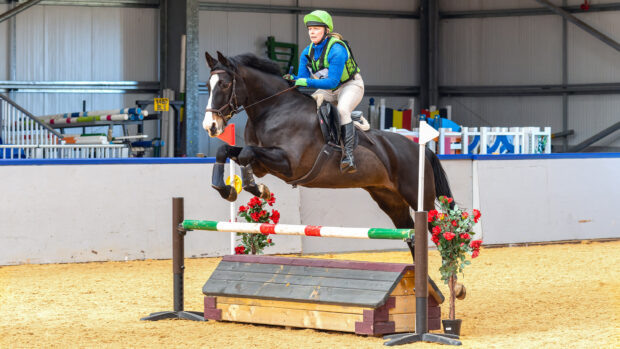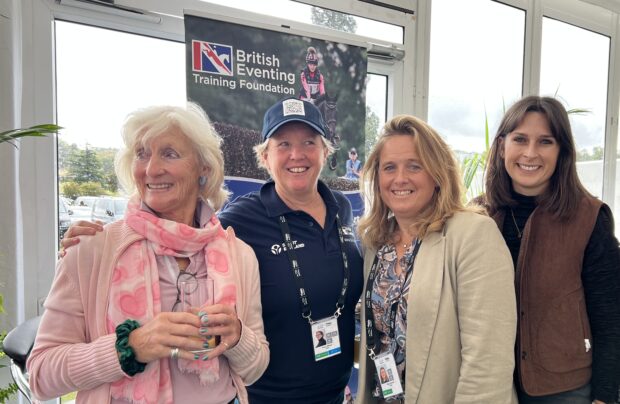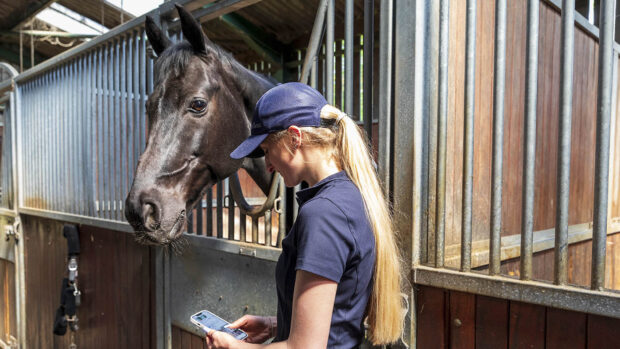With the 2015 eventing season looming, British Eventing (BE) has pulled together a checklist to make sure you're up to speed with important information and changes for the coming season
How can you check the status of an event this season?
BE posts regular updates about its events on www.britisheventing.com. Follow the BE social networks (Facebook and Twitter) to get the latest official news regarding events you are heading to.
BE also has an abandonment hotline. However where possible, if an event abandons, BE will send text messages to the number recorded in the “mobile” field on the BE database. Please check your details are up to date otherwise you will not receive any information sent regarding abandonments.
Do I need to wear a medical armband?
From the start of the season competitors are advised to wear a medical armband if they have a medical condition that may impact on their care in the case of an emergency.
Conditions that are relevant include recent head injury, serious past injuries/surgery, chronic health problems such as diabetes, long-term medications and allergies. If in doubt competitors should consult with their own treating physician. The new insert will clearly display these crucial details on the front of the card allowing medical professionals to access the information with ease in the case of an accident.
The new insert will fit into the original armband and can be requested from the BE office by email info@britisheventing.com or collected from a BE event.
It is not necessary for competitors without any medical conditions to wear a medical armband. However, competitors are welcome to wear an armband if they desire.
What standard does my hat need to be?
If you are a new member, or have been out of the sport for a while please make sure that:
Your protective headwear is of the following standard:
- British – AII PAS 015, BSEN 1384 (provided it is BSI Kitemarked or SEI)
- European EN1384
- American – AII SEI ASTM 95, ASTM F1163, 2004 and SNELL E2001
- Australian & New Zealand – AII AS/NZS 3838 2003
Your protective headwear is tagged when you arrive at the event and sign in at the secretary’s tent; the current hat tag is GREEN
BE will permit BS EN 1384 hats in 2015, but not thereafter. All hats will be re-tagged in 2016, at which stage none made solely to BS EN 1384 will be tagged or permitted for use.
Continued below…

6 types of event horse you’ll find at every horse trials
The double clear jumper, the perfect FEI pony and the horse who wants to do pure dressage — do you
Can I wear a hat with a fixed peak for cross-country?
Competitors will no longer be able to wear hats with fixed peaks for the cross-country phase. Only jockey skulls will be permitted on cross-country. While a jockey skull is a commonly understood description for a type of peakless protective helmet, for the purposes of clarification, a jockey skull typically has:
- No peak, peak type extensions or noticeable protuberance above the eyes (or to the front) and has an even, elliptical or rounded shape.
- A smooth or slightly abrasive surface.
- A removable cover containing the peak, should one be required (such as a hat silk).
Helmets with fixed peaks can still be worn for the showjumping and dressage phases if in accordance with the rules, which remain unchanged.
What level of body protector do I need?
For the cross-country phase, you must have a British Equestrian Trade Association (BETA) approved and appropriately labelled level 3 body protector, with the year 2000 or 2009 shown on the label manufactured in the year 2000 or after. Please replace your body protector if it is not of this level or is damaged.
Air jackets are now permitted for use in both the dressage and show jumping phase with or without a body protector underneath.
Competitors are also reminded that all safety equipment must be used in its original, unaltered state.
Do I need to be registered with the FEI to compete overseas?
If you are aiming to compete at international events either overseas or in the UK, both you and your horse need to be registered with the FEI.
Your horse will also need an FEI passport cover for any FEI competition if you are competing at CIC3* or above in the UK, or any competition outside of the UK.
Do I need to bring my horse’s passport to BE events?
Please plan in advance to make sure your horse’s vaccinations are up to date in advance of the event.
No horse may compete (which includes entering the competition stables at an event) unless it has a current vaccination against equine influenza which complies with the conditions set out in rule 10.2 of the 2015 BE members handbook.
You must bring the passport and vaccination to every BE event, remember it is illegal to transport a horse anywhere without a passport.
Where do I find out about changes to the anti-doping code?
Please see BE’s equine doping control reminder page to make sure you are up to date with the latest information.
It is vital if you are competing at a national or international level you understand the rules and guidance surrounding anti-doping – both for humans and equines.
Changes to the World Anti-Doping Code for 2015 came into effect on 1 January 2015. It is critical that all athletes (competing at both a national and international level) and their support personnel and partners appreciate that the anti-doping system applies to them and ensure that they are fully aware of the changes made in the 2015 code.
See the BEF website for more information.
What do I need to remember on the day of the event?
BE event organisers go to every effort to ensure the smooth running of events and securing generous sponsorship. Remember a small effort from riders can go a long way, so please:
- When possible try to stick to your running times.
- If you decide to withdraw during the day please make sure you let the organisers know.
- Ensure you or a representative of your team attends the prize giving or let the organisers know if you cannot attend.
- Thank the sponsors if you are in their presence.
- A thank you to volunteers also goes a long way, events couldn’t run without them.
How long have I got to query a score?
It is important that you stay at the event to check that your scores are correct on the scoreboard. If you need to query your score (if you think there has been a mistake) or if you wish to object (you disagree with penalties given), you must do this within 30 minutes of the final scores being put up on the scoreboard, as there may not be anything that can be done after this time.
The correct procedure is to in the first instance see the secretary, who will organise for you to speak to the official BE steward. Please see rule 8.2 for further information.
What do I need to check on my vehicle before I set off?
In the coming weeks, heavy rain may affect access in to and out of lorry and car parks so please make life easier for the volunteers towing your vehicle by ensuring the following before you set off:
- Find out where your towing point is on the front of your vehicle
- Check the pin/screw in eye is present and correct and isn’t seized or obscured
Where can I find out about the latest rule changes?
Make sure you are up to date with the BE and FEI rule changes for 2015. Below are some useful links for riders to access information in full:
- Check the BE members’ handbook online
- Visit the BE website for 2015 rule changes
- FEI rules online
- FEI warning regarding the administration of supplements to horses
- Dressage test changes:
BE91 and BE101 have been re-introduced for 2015
BE114 is a new test for all ONU18 classes in 2015
Please note that since the publication of the BE handbook, the FEI has updated the new tests they published at the beginning of the year therefore the tests in the BE handbook are not the latest versions.
For more information and to download the BE members’ handbook visit: www.britisheventing.com



